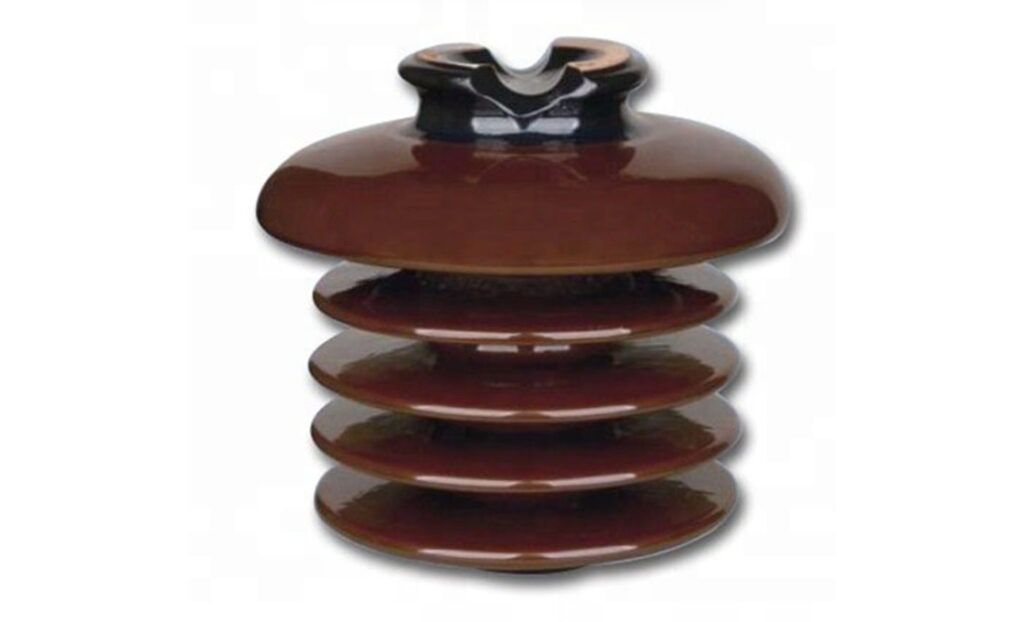
A pin insulator is a component used to support and insulate conductors. Its main role is to ensure safe and efficient transmission of electrical power. The pin insulator consists of a conical-shaped body with grooves. These designs control the electric field and prevent the formation of a continuous path for leakage current. This helps to ensure the current flows through the conductor and does not create unintended paths. Pin insulators also have high mechanical strength. This helps to withstand the stresses imposed by the conductor. It is from materials like porcelain or glass. They help to provide electrical insulation. Pin insulators safeguard power transmission lines by providing a resilient shield against environmental challenges in South America. The common types include clamp-top pin insulators, threaded pin insulators, angle pin insulators and vertical pin insulators. They find use in applications like transmission lines, substations and industrial power distribution.
Key features of pin insulator
Pin insulators have various features that define their functionality and effectiveness in applications. They are mostly used in overhead power transmission and distribution systems. The following are the common features of the pin insulator.
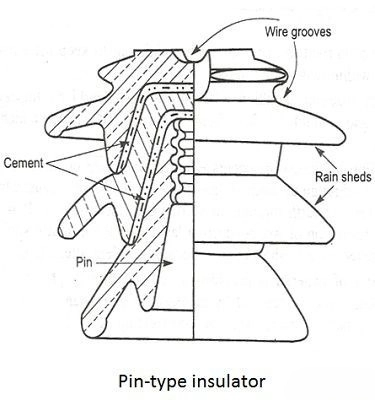
- Design – the insulator has grooves that help control the electric field. They also prevent formation of continuous paths for leakage current.
- Mounting mechanisms – they have designs to mount on crossarms using a metal pin. This helps to keep the insulator in place and provide stability to the conductor.
- Leakage distance – the pin insulator has a longer length that provides specific leakage distance. This is crucial to help prevent flashovers and electrical arcing.
- Corrosion resistance – they are from materials that resist corrosion for a longer service life. This is especially in challenging weather conditions.
- Cost effectiveness – they are generally cost effective compared to other types of insulators.
- Materials – they are from high strength materials that offer excellent electrical insulation properties. These materials include porcelain or glass.
- Groove configuration – these feature helps to ease the shedding of rainwater and contaminants. This is to prevent the formation of conductive paths and maintain structural integrity.
- Voltage rating – they are also available in different voltage ratings to suit different applications. They are well suited for low, medium and high voltage applications.
- Ease of installation – their designs allow for easy installation and maintenance.
Selection and installation of pin insulator
The selection process involves considering various factors to ensure the reliable and efficient performance. The factors include voltage rating, leakage distance, mechanical strength, cost, material, application type and ease of installation. The installation of pin insulators consists of crucial steps in the construction and maintenance of lines. The following is a general installation process of the pin insulators.
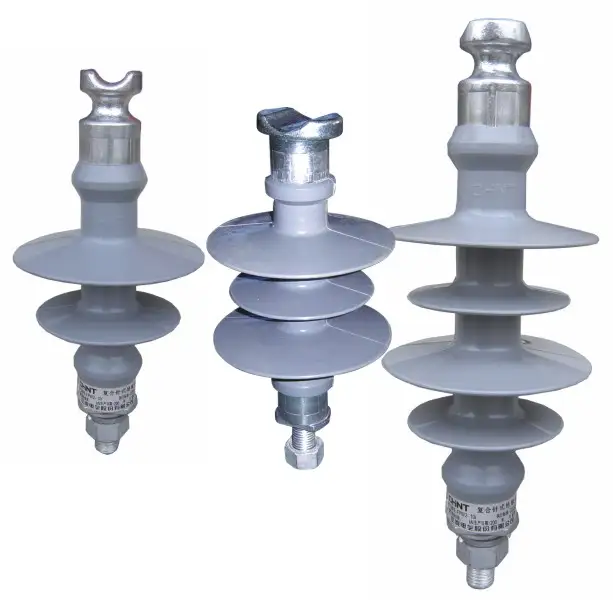
- Preparation – collect all the necessary tools and equipment needed for the installation. This is including pin insulators, crossarms, metal pins, nuts and bolts, wrenches and safety equipment. Also, ensure the installation area is clear of obstacles and hazards.
- Insulator inspection – inspect each pin insulator for any visible defects such as cracks, or damage. they should also meet the specified voltage requirements.
- Crossarm mounting – secure the crossarm to the supporting structure using suitable tools. It should provide the mounting point for the pin insulators.
- Insulator positioning – place the insulator on the crossarm and align them with the conductor path. Ensure the conductor groove is facing upward and the insulator is properly oriented.
- Pin insertion – insert the metal pins through the holes in the insulator and the crossarm. Use a wrench to tighten the nuts securely for mechanical support.
- Conductor stringing – string the conductors through the grooves of each insulator in the desired order.
- Tightening – tighten all the connections between insulators, conductors and pins. This is to ensure the overall stability and reliability of the installation.
- Final inspection – conduct a final inspection of the installation. Check for alignment, tightness and compliance.
- Documentation – keep detailed and accurate records of the installation. This is including insulator types, voltage ratings and installation dates.
Maintenance and inspection of pin insulator
Frequent maintenance and inspection of pin insulators ensures the reliability of power systems. It also helps to identify and address potential issues that may cause failures and unplanned outages. Additionally, it is advisable to conduct periodic professional maintenance and inspection. The following is a basic guide for maintenance and inspection of pin insulators in south America.
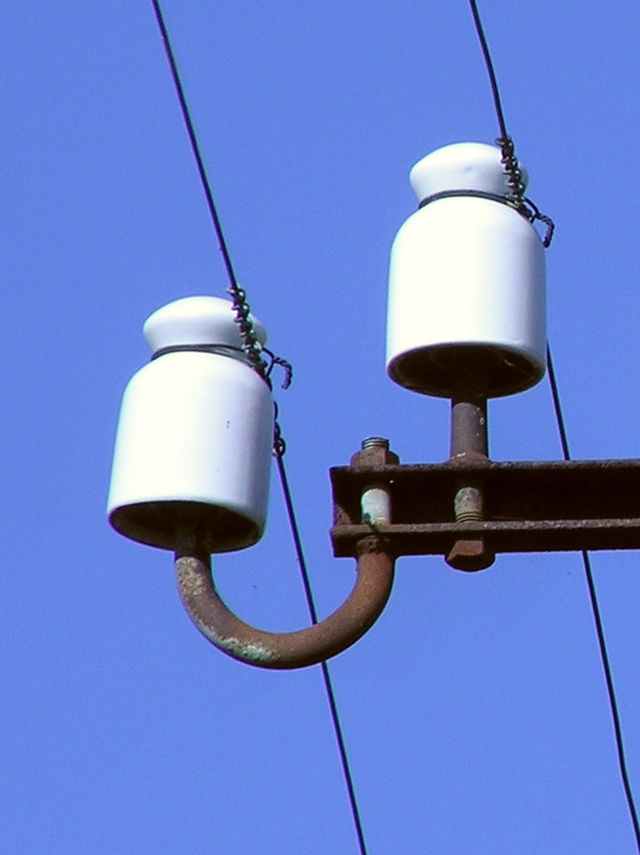
- Regularly inspect the pin insulators for signs of damage like cracks, chips or contaminants on the surface.
- Examine the insulator sheds for any signs of tracking or leakage paths. Tracking occurs due to pollution, contaminants or accumulation of conductive materials.
- Assess the mechanical integrity of the insulators including the pins and attachment hardware. Check to ensure the insulators are securely fastened to the crossarm and no loose components.
- Inspect the metal components such as pins and associated hardware for signs of corrosion. This can weaken the mechanical strength of the insulator.
- Periodically clean the insulator to remove dust, dirt and contaminants that accumulate on the surface.
- Use infrared thermography to identify any localized heating on the insulator surface. This is to identify hotspots that may indicate electrical issues.
- Conduct ultrasonic testing to identify any defects within the insulator. This helps to gain insights into the insulators condition.
- Replace any damaged insulator to prevent potential electrical failures or flashovers.
- Check and tighten the hardware such as nuts and bolts to maintain proper mechanical support. Also, lubricate moving parts to prevent corrosion and enhance performance.
- Consider applying protective coatings on the insulator surface. This is to repel contaminants and reduce chances of tracking.
- Maintain detailed records of the inspections, maintenance and cleaning activities.
Comparative analysis of pin insulators in South America
A comparative analysis of pin insulators involves considering various factors that influence performance and suitability. These includes factors such as types, designs, brands and manufacturers and suppliers in the region. Additionally, the specific details vary depending on local conditions, regulations and preferences. The following are the factors to include in a comparative analysis in South America for pin insulators.
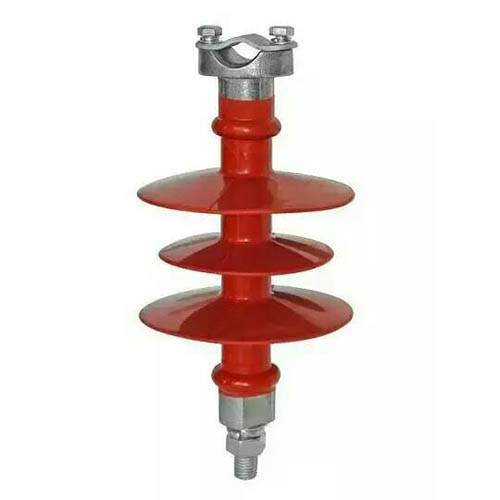
- Voltage requirements – the voltage requirements vary depending on the different regions in South America.
- Contamination levels – there are various areas with higher levels of pollution and contaminants. They affect the performance of insulators and thus require features like effective shedding.
- Costs – the pin insulators should offer a balance between cost effectiveness and performance depending on the economic considerations.
- Technological advancements – consider the advancements in design and materials of the pin insulators. They should improve performance, reduce maintenance needs and enhance reliability.
- Ease of installation – put into consideration the diverse geography and accessibility challenges. They should allow ease of installation for pin insulators and contribute to the efficiency of power distribution system.
- Material selection – take into account the choice between porcelain, glass or polymeric materials. They should offer mechanical strength, electrical insulation and resistance to environmental conditions.
- Mechanical strength – consider extreme weather potentials such as strong winds and storms. Select pin insulators with adequate mechanical strength to withstand mechanical stresses.
Certifications and standards in South America.
Pin insulators comply to various certifications and standards in South America. The certifications and standards influence the manufacturing and use of pin insulators in the region. Additionally, it is important to ensure the selected pin insulators meet the necessary standards and regulations. The following are the common standards and certifications in South America.
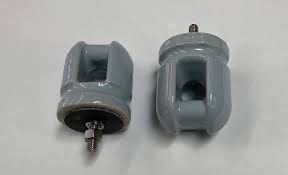
- IEC standards – this sets global standards for electrical and electronic technologies including pin insulators. They provide specifications for insulators for overhead lines with a nominal voltage.
- ANSI standards – this establishes standards for the electrical and electronic industries. It also covers specifications for porcelain and toughened glass pin-type insulators for overhead lines.
- ASTM standards – this develops and publishes technical standards for a wide range of materials, products, systems and services.
- ISO certification – this develops and publishes international standards related to materials, testing and quality management.
Regional market for pin insulators in south America
There are various factors that influence the regional market for pin insulators. These factors include economic conditions, demand and supply, suppliers and competition. Additionally, it is advisable to consult industry professionals for help during the market assessment. The following are the market conditions that influence the market for pin insulators.
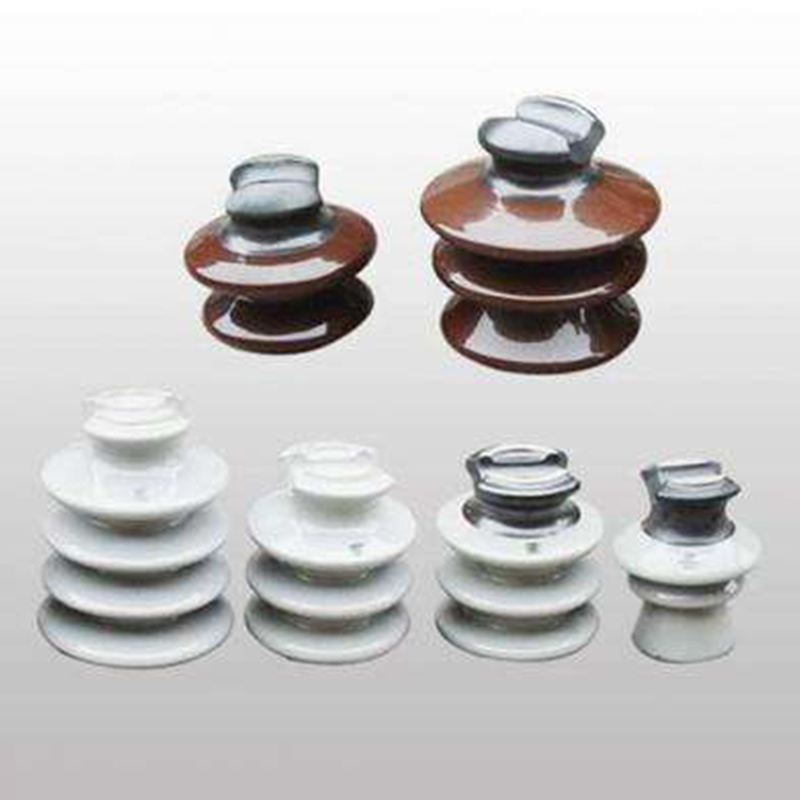
- Infrastructure development – development of electrical infrastructure influences the demand and availability of pin insulators.
- Investment climate – favourable investment conditions and policies can attract investments in energy projects. this leads to increased demand for electrical components like pin insulators.
- Technological advancements – innovations in design and material offer improved performance, durability and reliability which impacts the market.
- Industrialization – industrial growth leads to increased demand for electricity. this is because it may bring the need for extra power distribution lines.
Frequently asked questions
A pin insulator is a component used to provide electrical insulation in south American power systems. It does this by providing a high resistance barrier between the conductor and its surroundings.
Environmental factors significantly impact the performance of pin insulators in their role to provide electrical insulation and reduce flashovers. Pollution creates a conductive layer that allows electricity to leak across it. Weather conditions may cause flashovers, expansion and contraction and corrosion.